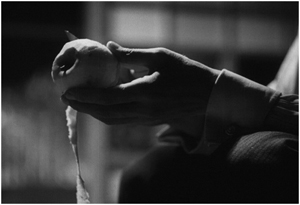March 31st Log
FIRES ON THE PLAIN
1959, Kon Ichikawa, Japan
1st Viewing, DVD
One of the most brutal examinations on the horror of war, Fires on the Plain is a landmark film of Japanese cinema. Directed by Kon Ichikawa, the film is one that handles the brutality with the ease of a filmmaker with a personal vision. Fires on a Plain is less an artistically expressive or intellectual film, but is more a film that becomes thought-provoking through its depiction and overall explanation. Few films are made with such straight-forward cruelty of presenting war and yet Ichikawa still blends in a strange sense of humor. The dry sense of humor seems to distill some of the dreadful portrayal of the film, adding some additional energy to it. In its approach, Fires on the Plain could not be any more different the Ichikawa’s 1956 masterwork The Burmese Harp. Yet the two films share distinct qualities that undoubtedly connect them in historic and moral ways. Of course, both share similar themes of war and the effects of war upon Japan and Japanese soldiers. Ichikawa is one of the key figures to emerge from the postwar Japanese “humanist” era along with celebrated filmmakers such as Akira Kurosawa, Masaki Kobayashi, and Kinosuke Kinoshita. While a difficult film to “enjoy”, Fires on a Plain remains an important film of Japanese cinema history and a truly rare achievement of filmmaking.
ORPHANS OF THE STORM
1921, D.W. Griffith, United States
Repeat Viewing, DVD
One of cinema's all-time innovative filmmakers, DW Griffith portrayals an epic, melodramatic, and haunting examination of cruelty. Griffith is easily among the most important filmmakers in cinema history, and Orphans of the Storm stands as proof of his influential creation and vision. The daring ambition and grand filmmaking style alone make this a recommendation for anyone interested in cinema and it's history. This remains one of Griffith's most suspenseful epics. And of course, the brilliant Lillian Gish is wonderful again, but she more or less steps aside here for her sister, Dorothy Gish, who gives the most notable performance. While this film may rank as minor in comparisons to Griffith's more important early work, I still believe Orphans of the Storm is a classic and unforgettable experience



